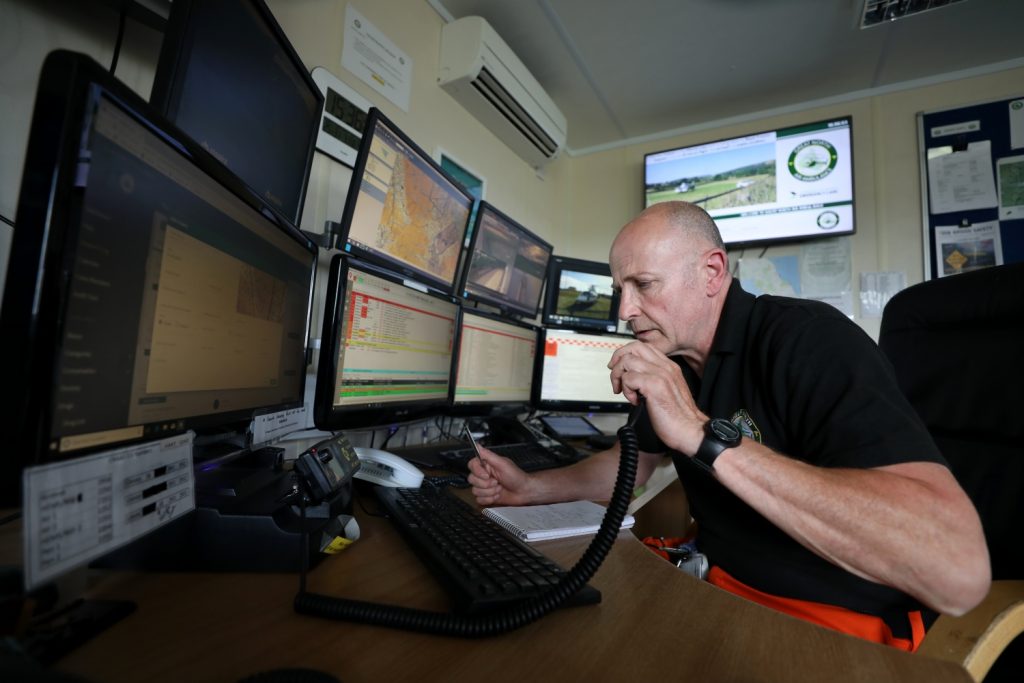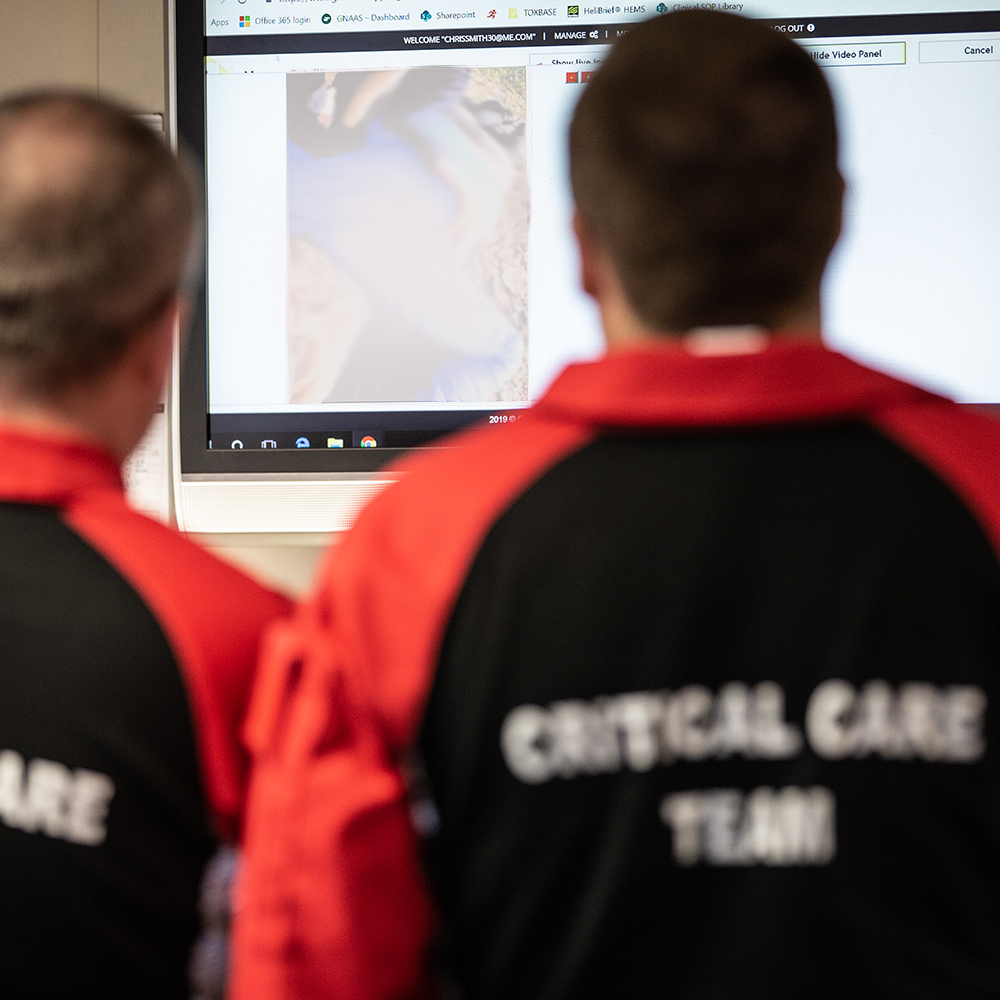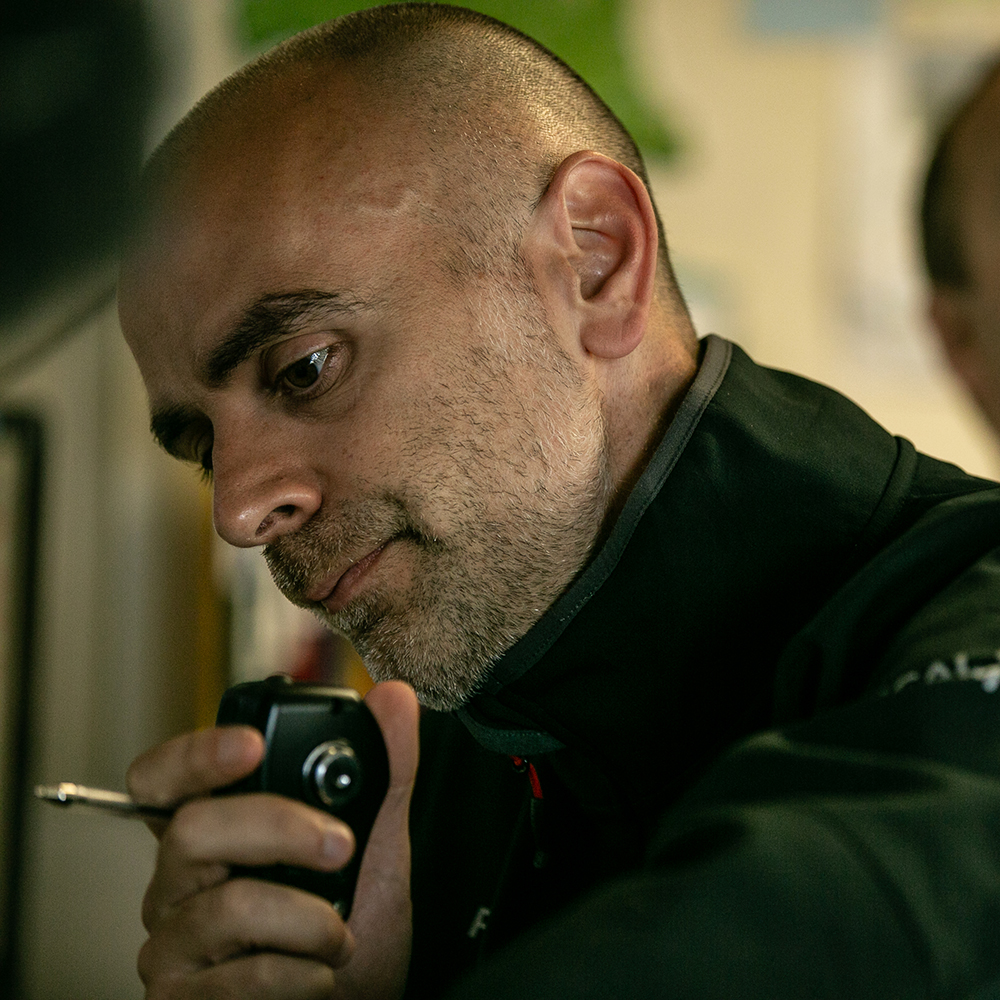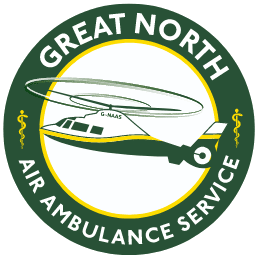Have you ever wondered how we’re called into action? Here’s our paramedic Marcus Johnson explaining what it’s like to work on the airdesk.
How long do you monitor the desk for?
The desk is always manned by a clinician and we try and take turns. On average, we sit for one hour before swapping to ensure full concentration.
How do you find the responsibility of being on the desk?
Working on the desk can be very stressful at times. You have to decide whether to send the aircraft or not. If you get it wrong, you either spend a lot of money unnecessarily or even worse, you don’t send the aircraft to a person who needs your help. You are making this decision within seconds and with little information.


COVID-19: With your help we will fly on
What do you monitor at the desk?
We monitor 999 calls coming in to the North East Ambulance Service (NEAS) and North West Ambulance Service (NWAS) from members of the public along with ongoing incidents involving mountain rescue teams. We are looking for reports of major trauma or illness that require the assistance of a critical care team. We also monitor aircraft movements and pass information on the radio.
Why do you need to monitor the calls?
By monitoring calls, it means we can dispatch the aircraft faster. The ambulance dispatchers are focused on sending the road crews, we can focus on the aircraft. The GNAAS clinician on the desk can also use their medical knowledge to interpret the information to ensure we are only dispatching to patients who we anticipate will benefit from critical care interventions.
Do you look for incidents that meet certain criteria?
This is quite difficult to answer. Previously we had a set list of criteria that we would dispatch to however, we realised that there may be patients who did not fit the set criteria but whose injury or illness may still benefit from care provided by our critical care team. By removing this list, it has allowed the clinicians to use their knowledge and experience to make wiser decisions before tasking.


COVID-19: With your help we will fly on
How are you tasked to an incident?
We can be requested to attend incidents by both NEAS or NWAS, however, ultimately it is the decision of the clinician at the desk to decide if the critical care team need to be dispatched. We can dispatch the aircraft without the request of the ambulance service if the situation requires it.
How do you decide to task to an incident?
Many of the clinicians have 10+ years’ experience. We use this experience to interpret the information given on the call to decide whether the patient will benefit from our care. We look at what the patient is complaining of and look to see what we could offer that patient, in terms of care above and beyond a road ambulance crew. If there is nothing extra to offer, we do not task the aircraft.


How often do you interrogate calls?
There are two main ways of interrogating the calls. Passively listening to the caller as they give information to the call taker in control. Actively interrogating the caller involves phoning the caller back and asking them to confirm some of the details given. On average, interrogation will vary depending on how busy the call centre is.
For the past few years you’ve been using the GoodSAM service, which has enabled you to access a 999 caller’s smartphone camera so you can get a live look at the nature and extent of injuries sustained by a patient. How effective has this been in helping to decide whether to task to an incident?
This can give the clinician at the desk vital information which may be difficult to describe over the phone. For example, for a member of the public, describing a wound may be difficult especially when stressed, however, showing a video allows the clinician to quickly analyse the need for aircraft dispatch.
Help preserve our critical care services
We want to be there when you need us, but we can only do that with your support.
Donate here



